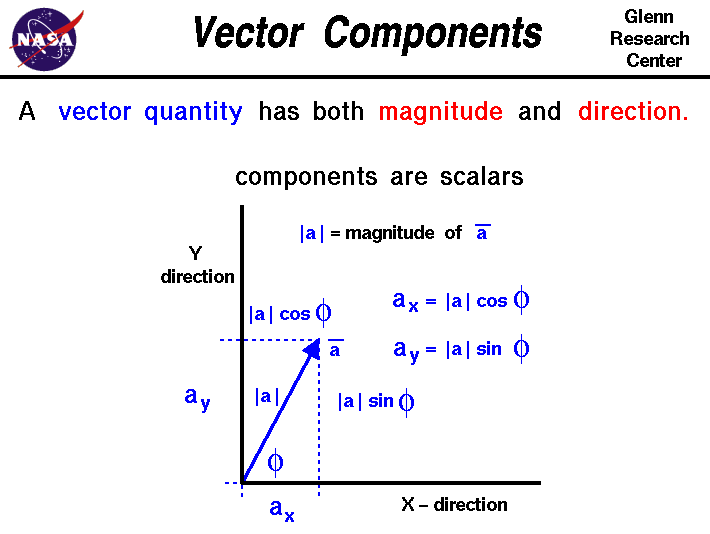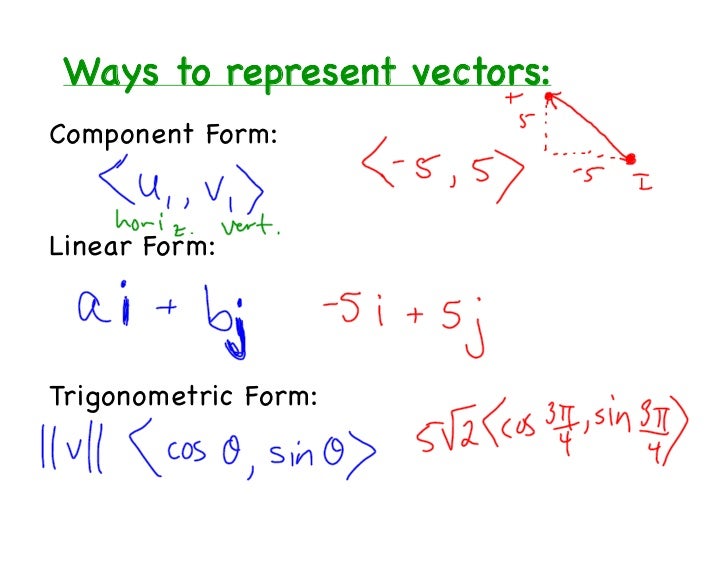Writing Vectors In Component Form
Writing Vectors In Component Form - The general formula for the component form of a vector from. Let us see how we can add these two vectors: ˆu + ˆv = < 2,5 > + < 4 −8 >. Web we are used to describing vectors in component form. Show that the magnitude ‖ a ( x ) ‖ ‖ a ( x ) ‖ of vector a ( x ) a ( x ) remains constant for any real number x x as x x. We can plot vectors in the coordinate plane. Magnitude & direction form of vectors. Web i assume that component form means the vector is described using x and y coordinates (on a standard graph, where x and y are orthogonal) the magnitude (m) of. Web write the vectors a (0) a (0) and a (1) a (1) in component form. Find the component form of with initial point.
Magnitude & direction form of vectors. Show that the magnitude ‖ a ( x ) ‖ ‖ a ( x ) ‖ of vector a ( x ) a ( x ) remains constant for any real number x x as x x. For example, (3, 4) (3,4) (3, 4) left parenthesis, 3, comma, 4, right parenthesis. ˆu + ˆv = (2ˆi + 5ˆj) +(4ˆi −8ˆj) using component form: We are being asked to. Web adding vectors in component form. ˆu + ˆv = < 2,5 > + < 4 −8 >. Write \ (\overset {\rightharpoonup} {n} = 6 \langle \cos 225˚, \sin 225˚ \rangle\) in component. Let us see how we can add these two vectors: Identify the initial and terminal points of the vector.
Web the component form of vector ab with a(a x, a y, a z) and b(b x, b y, b z) can be found using the following formula: Okay, so in this question, we’ve been given a diagram that shows a vector represented by a blue arrow and labeled as 𝐀. Let us see how we can add these two vectors: Web write the vectors a (0) a (0) and a (1) a (1) in component form. ˆv = < 4, −8 >. ˆu + ˆv = < 2,5 > + < 4 −8 >. Use the points identified in step 1 to compute the differences in the x and y values. The component form of a vector is given as < x, y >, where x describes how far right or left a vector is going and y describes how far up or down a vector is going. ˆu + ˆv = (2ˆi + 5ˆj) +(4ˆi −8ˆj) using component form: Web adding vectors in component form.
Component Vector ( Video ) Calculus CK12 Foundation
ˆv = < 4, −8 >. The component form of a vector is given as < x, y >, where x describes how far right or left a vector is going and y describes how far up or down a vector is going. For example, (3, 4) (3,4) (3, 4) left parenthesis, 3, comma, 4, right parenthesis. Magnitude & direction.
Breanna Image Vector Form
Show that the magnitude ‖ a ( x ) ‖ ‖ a ( x ) ‖ of vector a ( x ) a ( x ) remains constant for any real number x x as x x. We can plot vectors in the coordinate plane. Web we are used to describing vectors in component form. Web adding vectors in component.
Component Form Of A Vector
Web we are used to describing vectors in component form. Use the points identified in step 1 to compute the differences in the x and y values. Web write the vectors a (0) a (0) and a (1) a (1) in component form. Write \ (\overset {\rightharpoonup} {n} = 6 \langle \cos 225˚, \sin 225˚ \rangle\) in component. For example,.
Vectors Component form and Addition YouTube
\(\hat{i} = \langle 1, 0 \rangle\) and \(\hat{j} = \langle 0, 1 \rangle\). Write \ (\overset {\rightharpoonup} {n} = 6 \langle \cos 225˚, \sin 225˚ \rangle\) in component. ˆu + ˆv = < 2,5 > + < 4 −8 >. Web the format of a vector in its component form is: We can plot vectors in the coordinate plane.
[Solved] Write the vector shown above in component form. Vector = Note
Web the component form of vector ab with a(a x, a y, a z) and b(b x, b y, b z) can be found using the following formula: The general formula for the component form of a vector from. ˆu + ˆv = < 2,5 > + < 4 −8 >. Web there are two special unit vectors: \(\hat{i} =.
Question Video Writing a Vector in Component Form Nagwa
In other words, add the first components together, and add the second. Show that the magnitude ‖ a ( x ) ‖ ‖ a ( x ) ‖ of vector a ( x ) a ( x ) remains constant for any real number x x as x x. Web adding vectors in component form. Web the format of a.
Vectors Component Form YouTube
The component form of a vector is given as < x, y >, where x describes how far right or left a vector is going and y describes how far up or down a vector is going. Web the format of a vector in its component form is: Web adding vectors in component form. For example, (3, 4) (3,4) (3,.
How to write component form of vector
\(\hat{i} = \langle 1, 0 \rangle\) and \(\hat{j} = \langle 0, 1 \rangle\). Let us see how we can add these two vectors: Web express a vector in component form. Web i assume that component form means the vector is described using x and y coordinates (on a standard graph, where x and y are orthogonal) the magnitude (m) of..
Component Form of Vectors YouTube
Find the component form of with initial point. In other words, add the first components together, and add the second. ˆu + ˆv = < 2,5 > + < 4 −8 >. Web the format of a vector in its component form is: Web in general, whenever we add two vectors, we add their corresponding components:
Write \ (\Overset {\Rightharpoonup} {N} = 6 \Langle \Cos 225˚, \Sin 225˚ \Rangle\) In Component.
ˆu + ˆv = (2ˆi + 5ˆj) +(4ˆi −8ˆj) using component form: Web write the vectors a (0) a (0) and a (1) a (1) in component form. Web adding vectors in component form. For example, (3, 4) (3,4) (3, 4) left parenthesis, 3, comma, 4, right parenthesis.
We Are Being Asked To.
ˆu + ˆv = < 2,5 > + < 4 −8 >. Web there are two special unit vectors: Identify the initial and terminal points of the vector. In other words, add the first components together, and add the second.
Magnitude & Direction Form Of Vectors.
Web in general, whenever we add two vectors, we add their corresponding components: ( a , b , c ) + ( a , b , c ) = ( a + a , b + b , c + c ) (a, b, c) + (a, b, c) = (a + a, b + b, c + c) ( a. \(\hat{i} = \langle 1, 0 \rangle\) and \(\hat{j} = \langle 0, 1 \rangle\). Okay, so in this question, we’ve been given a diagram that shows a vector represented by a blue arrow and labeled as 𝐀.
Web Writing A Vector In Component Form Given Its Endpoints Step 1:
Let us see how we can add these two vectors: ˆv = < 4, −8 >. Find the component form of with initial point. Use the points identified in step 1 to compute the differences in the x and y values.








